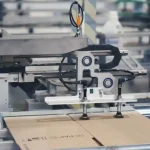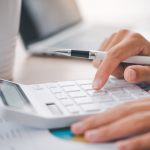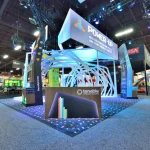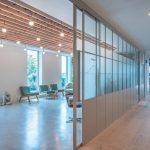Trade shows continue to be one of the most effective ways to connect face-to-face with prospects, showcase new products, and build brand visibility. But standing out on a crowded show floor takes more than just showing up—it requires a booth that’s designed to capture attention and create memorable experiences.
Just like fashion or interior design, trade show booth design evolves every year. Brands that lean into fresh, innovative trends not only stand out visually, but also show that they’re forward-thinking and customer-focused.
Here are the top trade show booth design trends to watch this year—and how to use them to elevate your presence at your next event.
1. Sustainability and Eco-Friendly Materials
Sustainability is no longer a niche concern—it’s a business priority. More companies are choosing eco-conscious booth designs, using recyclable materials, reusable components, and energy-efficient lighting.
Popular features:
- Fabric graphics made from recycled materials
- Modular structures that reduce waste
- LED lighting over traditional fixtures
- Bamboo, reclaimed wood, and other natural finishes
Sustainable booths not only appeal to environmentally conscious attendees—they also often save money in the long term through reuse and lower energy costs.
2. Immersive, Experiential Design
Trade show attendees want more than information—they want an experience. Immersive booth design brings your brand to life in ways that engage all the senses and encourage deeper interaction.
What this looks like:
- Branded environments that feel like a mini retail space or pop-up shop
- Multisensory experiences with light, sound, scent, and touch
- Thematic designs that tell a story or take visitors on a journey
These booths don’t just look good—they’re designed to be remembered. The goal is to make people feel something, not just see something.
3. Minimalist Layouts with Maximum Impact
Clean, open layouts are replacing cluttered, overstuffed booths. Brands are embracing minimalist design to create a sense of calm and focus in an otherwise chaotic environment.
Design elements include:
- White space and open floor plans
- Limited color palettes with strong brand accents
- Simple messaging with high-impact visuals
This approach helps guide attention where it matters most—your product, your people, and your message.
4. Tech Integration That Adds Value
Technology isn’t just for show anymore. It’s being used more strategically to enhance engagement, gather data, and deliver personalized experiences.
Trending tech features:
- Interactive touchscreens or kiosks
- Augmented reality (AR) and virtual reality (VR) demos
- Real-time product customization tools
- QR codes for instant info, downloads, or lead capture
The key is to use technology that serves a purpose—not just to look futuristic, but to make the visitor experience smoother, smarter, or more enjoyable.
5. LED Walls and Digital Displays
Large-format video walls and digital signage are becoming standard at trade shows. They offer eye-catching motion, dynamic messaging, and the ability to change content throughout the day.
Benefits include:
- Visual storytelling without relying on print graphics
- Live demos or social proof via video reels
- Greater flexibility across events
These displays help draw attendees from across the floor—and they make your booth look modern and polished.
6. Hybrid Booths for Physical + Digital Experiences
As virtual elements continue to merge with in-person events, hybrid booths are gaining traction. These are spaces designed to engage both live attendees and remote audiences simultaneously.
Key features might include:
- Live streaming from the booth to online audiences
- On-site recording of demos or interviews for post-show content
- Digital lead capture tied to email or SMS automation
Even if you’re not hosting a virtual trade show, having hybrid elements helps extend your booth’s impact beyond the event itself.
7. Smart, Purposeful Lighting
Lighting is no longer just a necessity—it’s a strategic design tool. Today’s booths are using lighting to create mood, highlight products, and even direct foot traffic.
Lighting trends include:
- Backlit graphics for a clean, high-end look
- LED light strips in counters and flooring
- Accent lighting to frame hero products or features
Done well, lighting can double the perceived quality of your booth and dramatically increase visual appeal.
8. Smaller, Smarter Spaces
With rising costs and an emphasis on ROI, many exhibitors are downsizing their footprints—but not their impact. Smart design allows small booths to be just as effective as larger builds.
What makes it work:
- Modular furniture and displays that optimize every inch
- Strong vertical elements for visibility
- Multi-purpose stations (e.g., counter + lead capture + demo)
This “less is more” trend proves that efficiency and creativity often go hand-in-hand.
Final Thoughts
Trade show design is evolving fast. Today’s most effective booths are not only visually stunning—they’re strategic, efficient, and experience-driven. Whether you’re reusing a modular frame or planning a custom build, keeping up with current trends helps ensure your brand looks relevant, innovative, and engaged with what today’s attendees care about.
So, as you plan your next event, think beyond structure and square footage. Think about the story you’re telling, the experience you’re creating, and the impression you’re leaving behind. Because on the show floor, attention isn’t given—it’s earned. We recommend Trade Show Booth Design.










